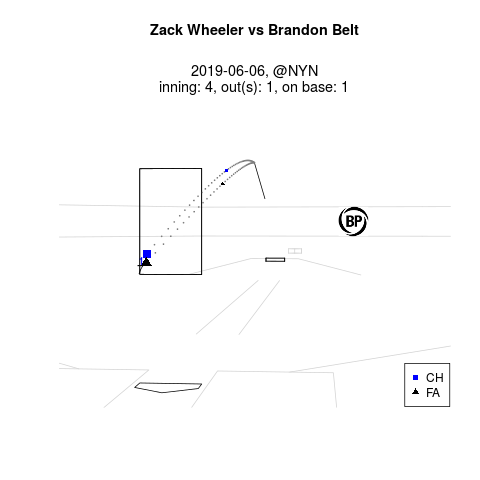Fixing Zack Wheeler’s Fastball Mix
Although he may not have been one of truly few elite free agents on the market, Zack Wheeler was a very big signing for Philadelphia, agreeing to a five-year contract worth $118 million. Over the past two years, Wheeler’s amassed an fWAR of 8.9 in 377.2 innings while posting above-average strikeout and walk rates. Additionally, his underlying metrics have also been strong over the past two seasons, and they don’t signal any drastic mean reversals in performance. Granted, there is obviously still risk here. Wheeler missed the 2015 season and the start of 2016 with a UCL tear, and he was shut down upon his return with a flexor strain. Furthermore, this past July he was shut down with shoulder fatigue, limiting the Mets’ ability to market him to potential suitors at the trade deadline.
One of the most interesting storylines in the game is player development. At the moment, the most analytically inclined teams are thriving at meshing the data with coaching, and the gap is only growing. These teams are creating new players. This is particularly important when signing free agents given the current contract negotiation dynamics. The teams and players have access to most of the same information, with the $/WAR metric playing a central role in future valuations, and if you can “create” a new player who beats the projections, you’re generating additional value for your club.
In terms of Wheeler, I think I have a bit of a theory on how to generate that marginal value through a tweak in his approach. The biggest change in Wheeler’s approach between 2018 and 2019 was in his usage of his fastballs and his changeup. In 2018, the righty threw his four-seam fastball almost three times as frequently as his two-seamer, and his changeup was almost almost non-existent. (Disclaimer: I believe that there may be an error in Statcasts’ classification of Wheeler’s splitter and changeup — they may actually be the same pitch).

The increased reliance on his two-seamer and changeup is pretty distinct, but I’m not convinced this is Wheeler’s optimal pitch mix. One of the biggest factors in a successful fastball/changeup combination is the speed differential. This is further emphasized when comparing a sinker and changeup due to the similarity in movement profiles of the pitches. Looking at Wheeler, the horizontal movement of the two pitches was almost identical, and they averaged eight inches of difference in vertical movement. In addition, of the 94 players in 2019 who threw over 750 pitches with greater than 5% sinkers and 5% changeups, Wheeler’s velocity differential of 7.5 mph was slightly larger than the mean (7.32 mph) and median (7 mph). By no means do the characteristics of his sinker and changeup stand out. This is compounded by the fact that Wheeler does a poor job tunneling these two pitches. Baseball Prospectus’ matchup tool gives us a great example of the lack of tunnel for these two pitches.

Taking this plate appearance against Brandon Belt, it’s clear to see that Wheeler’s sinker and changeup look different to the hitter from the release point. Belt ended up taking the seventh pitch of this at-bat, a sinker, into left-center for a home run.

From the perspective of a right-handed batter, here’s an overlay of a changeup and sinker from a plate appearance against Ronald Acuña Jr. in which the Braves star took a Wheeler sinker deep.
It’s not hard to see that Wheeler’s sinker was eaten alive by hitters in 2019, which makes the choice of increased reliance on the pitch more than a little confusing. Nothing in his underlying metrics showed that his four-seamer was significantly holding him back in 2018. The solution appears to be leaning back into his four-seamer in 2020 and hoping that through changing his pitch mix, the efficacy of the sinker and changeup/splitter returns.

The Phillies will have likely dug into this data and developed their own method of improvement as well. If the difference between Wheeler’s 2018 (3.31 ERA/3.25 FIP) and his 2019 (3.96 ERA/3.48 FIP) is how he utilized his fastballs, the contract the righty signed this offseason could end up being a steal.
The post originally appeared here.
Sounds like Charlie Morton’s issue when he went to the Astros.